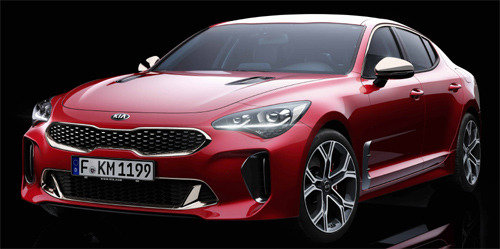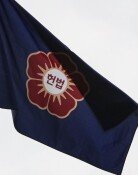Checkered history of Korean sports cars and sports sedans
Checkered history of Korean sports cars and sports sedans
Posted January. 17, 2017 07:03,
Updated January. 17, 2017 07:14

Industry experts estimate that there are roughly 500 Elan owners in South Korea. First released in 1996, the Elan had to see its mass production coming to a halt three years later. Among many factors were Kia’s worsening management conditions as the company was going through legal management in 1997. Above all, lack of public awareness on the value of sports cars was attributable to the halt. Korean consumers had little trust in locally produced sports cars. The 0-60 time (the amount of time for a vehicle to reach a speed of 60 mph) of Elan stood at 7.4 seconds, which was slower than more popular sports cars. The Elan was smaller than a typical Korean midsized sedan, but it was twice as expensive as domestic average cars.
Twenty one years later, Kia Motors unveiled its latest sports sedan “Stinger” at the 2017 North American International Auto Show (Detroit Motor Show). The Stinger has made a significant progress in many aspects.
The maximum torque, a yardstick for acceleration, has almost tripled from 19.0kg·m (Elan) to 52.0kg·m (Stinger). The Stinger has also slashed its 0-60 time by 2.3 seconds down to 5.1, the fastest among the vehicles manufactured by Hyundai and Kia. The automotive media predict that the Stinger will be able to compete against the BMW 3 series and Mercedes Benz C-Class models, a testimony to the remarkable advancement of South Korea’s auto technologies.
Between Elan and Stinger, a number of vehicles have been introduced in Korea, under the name of a “Korean sports car”. The flowery names were given to them, but their journey was far from rosy. There were often the voices of derision that the “sports cars” were an imitation at best. In fact, even the industry experts say that the vehicles that have been introduced as sports car in Korea are a bit far from the real sports car in the truest sense.
It is also true that Korean automakers lack the necessary skills to produce a topnotch sports car comparable to Ferrari. Domestic companies suffer from lack of motivation as well, owing in large part to the road conditions in the country heavily interspersed with congested sections. To appeal to consumers, Korean automakers are pushing for a new concept of sports sedan with a streamlined silhouette and stronger engine performance. Some of the main examples of such effort include the abovementioned Stinger and the G80 Sports, which was introduced by Hyundai Genesis in October last year.
The first sports sedan in Korea is Hyundai Scoupe, which was launched in 1990. Around the 1988 Seoul Olympic Games, a growing number of people began to enjoy sports and outdoor activities in Korea. The new trend led to an increasing interest in “sporty car,” especially among the younger population. Against this backdrop, Hyundai Motor decided to add the entirely new type of a coupe to its old fleet of traditional sedans. In fact, the Scoupe is the first Korean car whose 0-60 exceeded the mark of 10 seconds.
In 1996, Hyundai unveiled new model called Tiburon three months before Elan, and the car enjoyed a reputation as the “first sports car in Korea.” The Tiburon stirred much sensation as its curved silhouette and its face, which earned it the nickname “shark”, were similar to those of sports cars often seen in Hollywood movies.
Five years later, Hyundai Motor revealed another new sports car, Tuscani. The vehicle boasted many features that typically belonged to a genuine sports car such as the six speed manual transmission, a first in Korea, 17-inch aluminum wheels, back then the largest in the country, as well as the dual muffler. In fact, the Tuscani was the last Korean car that used the name of a sports car.
Afterwards, local car makers made the limited effort of modifying exiting models into a sports coupe, with improved performance that is similar to that of a sports car. The 2008 Genesis Coupe offered driving experiences more dynamic than any other locally produced vehicles, with the rear-driven system, 3800cc engine, and the 0-60 time at 6.5 seconds. The New Genesis Coupe in 2012 became even stronger, which instilled the confidence in the mind of local automakers that they can compete with global giants.
Domestic automakers are making contributions to boosting the popularity of sports sedans in Korea while a spate of small-and midsized vehicles have been retrofitted into a coupe, including the Forte Coup, K3 Coup, Avante Coupe, and Avante Sports.
Woo-Shin Han hanwshin@donga.com
Headline News
- Med professors announce intention to leave hospitals starting Thursday
- Bridge honoring Sgt. Moon Jae-sik unveiled in Pennsylvania
- Chief of Staff Chung tells presidential secretaries to stay away from politics
- US FTC bans noncompete agreements
- N. Korea launches cyberattacks on S. Korea's defense companies







